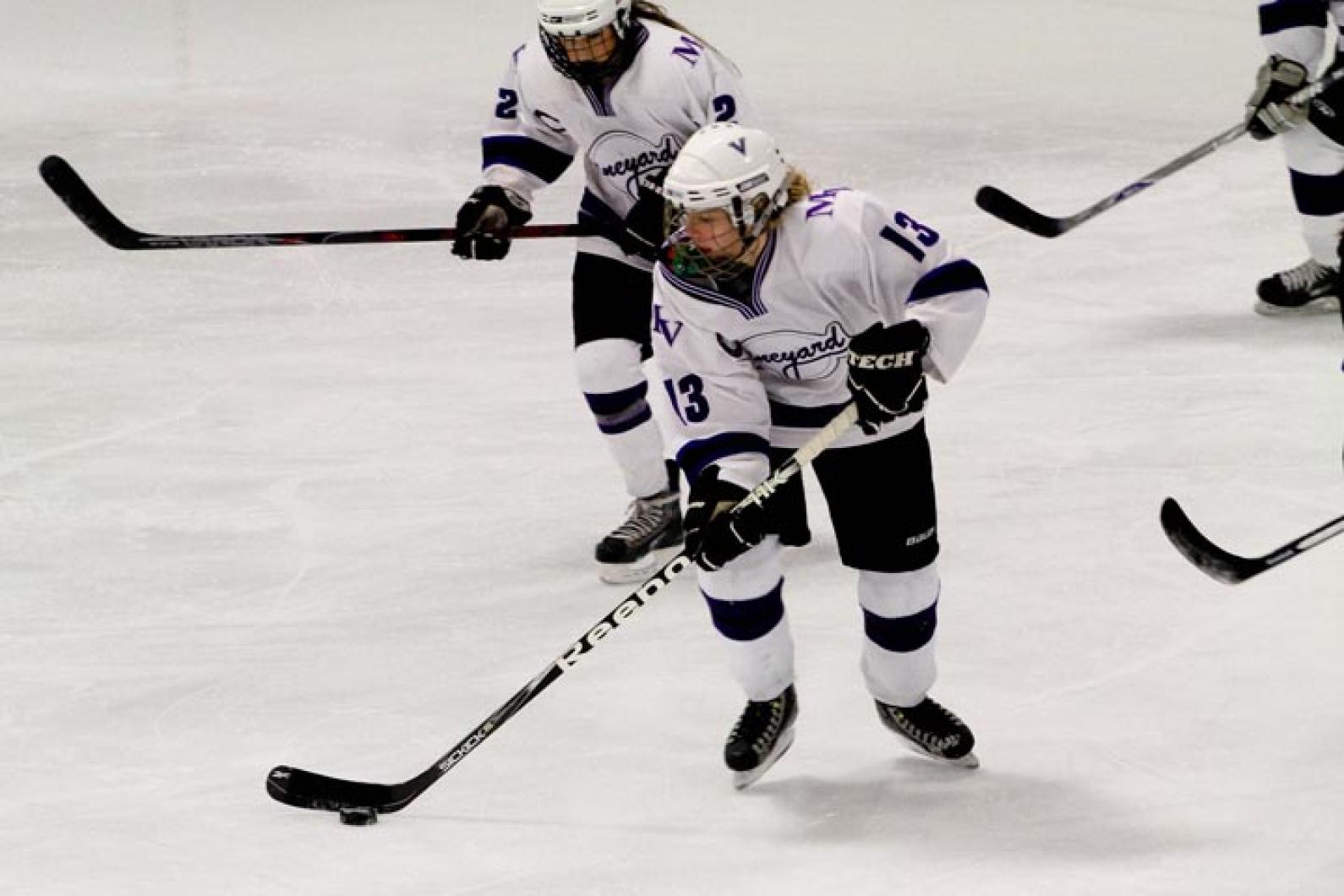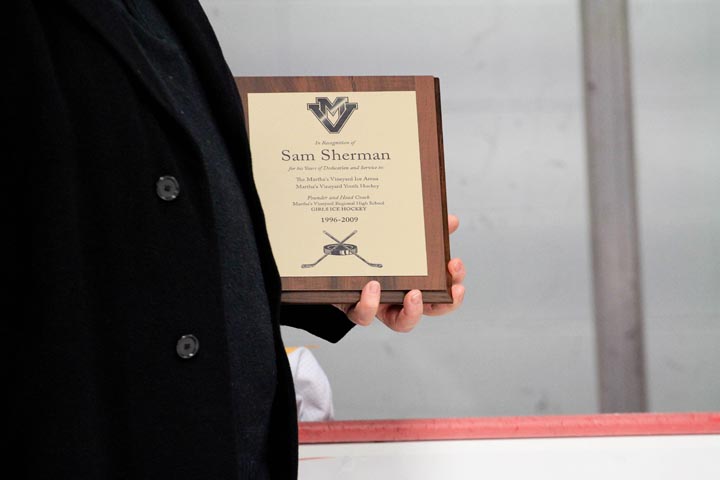In 1996, there was one high school girls’ hockey program on the Cape and Islands. It started as a club team, composed of former figure skaters, enthusiastic pond skaters, and several field hockey players learning to translate their skills to ice. The team was granted varsity status in 1999, but had no local competition, so they scheduled games against JV squads at private schools and logged innumerable bus hours shuttling around New England. And even after the high school athletic department had recognized girls hockey as a sport, the Massachusetts Interscholastic Athletic Association did not—until 2004—so the team had no chance of competing in an end-of-season tournament.
Today, 18 teams compete in the Southeastern Massachusetts Girls Hockey League, including the one that started it all, the Martha’s Vineyard program. There are five teams in the region, and still more programs dotting the South Shore. A Cape Cod squad, the 2007 Barnstable girls, went all the way to the still-new state tournament and came away with a championship trophy.
“It just kind of caught on,” founding coach Sam Sherman said in an phone interview earlier this week. Mr. Sherman, who helmed the girls’ team from its inception until the 2009-10 season, was honored last weekend for founding and building the Vineyard program. The ceremony took place during the annual Nan Rheault Tournament at the Martha’s Vineyard Arena.
Though Mr. Sherman never played formal hockey himself — “I played on ponds from the time I was nine or 10 years old,” he said — his three sons did, and he coached a Vineyard youth team for several years before taking on the task of creating the varsity girls’ program.
“I was really excited about the idea and the whole concept,” he said. “Being able to start a program from the ground up really appealed to me, and...I thought this would be a great opportunity for [the girls] to experience a different type of sport and obviously a challenging one.
“I remember one of [the field hockey players] asking me once ‘Can you use both sides of the stick ?’” Mr. Sherman said. (In field hockey, only the flat side of the stick can be used to move the ball.) “It was a big learning curve.”
Under the guidance of Mr. Sherman and assistant coach Andre Bonnell, the pioneering team members picked up the nuances of hockey quickly, ending their first season with a 9-4-1 record.
As more teams with larger pools of students to draw from began to participate in the sport, however, the Vineyard often found itself on the losing end of the stick. Ironically, some of the best teams fielded by the Vineyard never got an opportunity to play for a trophy, simply because there was not yet a trophy available.
But interest in the sport remained consistent—at one point, there was a varsity, junior varsity and freshman team in the program.
“It’s a growing sport in colleges, in high schools...unbelievable, considering all the budget cuts,” said current varsity coach John Fiorito, now in his second year.
“We’ve opened it up to as many people as want to do it,” Mr. Fiorito said, “And that’s really due to Sam.” Some programs, he said, have little interest in having a fourth line or a JV program, and take only the top players.
The initial learning curve Mr. Sherman and his team established persists, however, simply because hockey by nature is not a sport that a player can easily pick up at the start of high school.
“It takes more than other sports because you have to know how to skate [first],” said current player Lily Gazaille, a four-year varsity veteran.
“The demands it puts on [players] in terms of the skill set you need...it’s hugely challenging,” said Mr. Sherman.
A primary challenge presented to girls playing hockey is also the feature that distinguishes it most from the boys’ game: Checking is not permitted.
“You have to be able to get the puck away from [your opponent] without slamming them into the boards,” said senior captain Celia Mercier. “It’s a bit more, I don’t know...not delicate, but more difficult in [that] sense.”
Celia began playing ice hockey when she was five; her father played on the first boys’ varsity squad. Family connections drew most of the current squad to the sport: captain Maggie Johnson took to the ice in kindergarten, following in the footsteps of her older brothers and older cousin Gillian [O’Callaghan, one of last year’s captains]; freshmen Aubrey Ashmun and Sydney Davies both have older brothers on the boys’ varsity team.
“I feel like hockey’s been in my life for so long that it’s kind of a second home,” said senior forward Lizzie Kelleher. “I got started because my dad used to play; me and my sister [Phoebe] have been playing forever,”
Because players are introduced to the sport at such a young age, she continued, “Hockey’s just one of those sports where you know everybody that plays.”
The 2011-2012 varsity squad consists of former middle-school recreation league players, the ever-present group of figure skating converts, and a sizable group who grew up playing youth hockey with boys.
The girls lost just three seniors from last year’s squad, and the combination of returning experience and team unity has translated into a winning record (5-3, 3-1 in league play) at the season midpoint, a virtually unheard-of phenomenon in years past. Last year, the team had five wins all season. And as Mr. Fiorito points out, the girls outshot their opponents (Scituate and Marshfield) in two of the losses. “It’s just great to be competitive,” he said.
Mr. Sherman now can sit back and enjoy the fruits of his program.
“I think the team in the program couldn’t be in better hands,” said Mr. Sherman. “We’re going to have, I think, a shot at the state tournament.”
For this program, the overdue trip would be a satisfying one for its founding father.





Comments (1)
Comments
Comment policy »